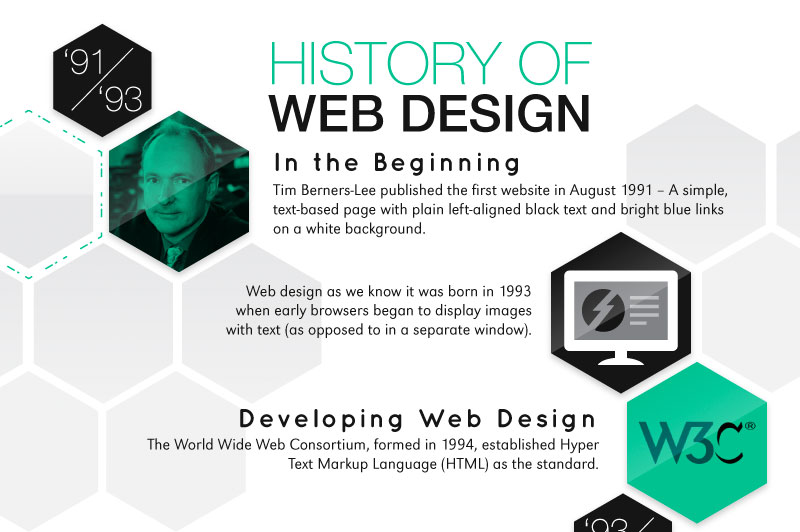Interested In Finding Out How Web Site Style Has Progressed Over The Years? Check Out The Trip From Uncomplicated Layouts To User-Centered Techniques
Interested In Finding Out How Web Site Style Has Progressed Over The Years? Check Out The Trip From Uncomplicated Layouts To User-Centered Techniques
Blog Article
Content Author-Kinney Dalby
In the past, sites were simple and focused on information. Navigation was straight, and design was for desktop computers. Currently, user experience is crucial. Information overviews styles for easy navigation. Responsive formats fit various devices. Today, dark setting minimizes strain, and minimal menus improve navigating. Interactive features involve individuals, and strong visuals attract attention. AI combination enhances interaction. See exactly how layout has actually progressed to enhance your on-line trip.
Very Early Days of Website Design
In the very early days of website design, simpleness preponderated. Internet sites were standard, with restricted shades, typefaces, and designs. The emphasis was on providing information rather than showy visuals. Users accessed the web through slow-moving dial-up connections, so rate and functionality were key.
Navigating menus were straightforward, commonly situated at the top or side of the page. Web sites were created for desktop computers, as mobile surfing wasn't yet widespread. Material was king, and designers prioritized easy readability over intricate layout components.
HTML was the main coding language used, and developers had to work within its restraints. Animations and interactive features were very little contrasted to today's requirements. Sites were static, with little dynamic content or tailored individual experiences.
Increase of User-Focused Design
With the evolution of website design, a shift towards user-focused design concepts has come to be increasingly noticeable. Today, producing internet sites that prioritize user experience is vital for engaging visitors and accomplishing business goals. User-focused style involves recognizing the requirements, preferences, and actions of your target audience to tailor the website's layout, content, and includes as necessary.
Developers now carry out detailed study, such as user surveys and usability testing, to collect understandings and responses directly from users. This data-driven strategy helps in producing instinctive navigation, clear calls-to-action, and aesthetically enticing user interfaces that reverberate with site visitors. By putting the user at the center of the design procedure, sites can deliver an extra individualized and delightful experience.
Receptive layout has additionally emerged as a crucial element of user-focused layout, making sure that websites are optimized for numerous gadgets and screen dimensions. https://www.searchenginejournal.com/machine-learning-examples/451881/ and functionality, accommodating the varied ways users interact with sites today. Basically, the rise of user-focused layout indicates a change towards developing electronic experiences that prioritize the demands and expectations of completion user.
Modern Trends in Web Design
Check out the current fads forming website design today. One noticeable pattern is dark setting layout, providing a smooth and modern appearance while reducing eye pressure in low-light settings. An additional key fad is minimal navigating, streamlining food selections and enhancing individual experience by concentrating on essential elements. Including micro-interactions, such as animated switches or scrolling effects, can create a much more interesting and interactive site. Receptive design continues to be important, making certain seamless individual experiences throughout different tools. Additionally, using bold typography and asymmetrical designs can add aesthetic rate of interest and accentuate particular web content.
Incorporating AI technology, like chatbots for consumer assistance or individualized referrals, enhances customer interaction and enhances procedures. Ease of access has also come to be a significant pattern, with developers focusing on comprehensive style techniques to accommodate varied customer demands. Welcoming sustainability by enhancing internet site efficiency for speed and efficiency is an additional arising trend in website design. Working together with individual feedback and data analytics to iterate and boost style continuously is important for remaining appropriate in the ever-evolving digital landscape. By embracing these modern patterns, you can develop an aesthetically appealing, straightforward site that reverberates with your target market.
Conclusion
As you review the evolution of site style from the early days to now, you can see how user-focused design has actually come to be the driving force behind modern-day patterns.
Embrace the trip of modification and adjustment in web design, constantly maintaining the user experience at the center.
Remain existing with the latest patterns and modern technologies, and never ever quit advancing your technique to develop visually magnificent and easy to use internet sites.
Progress, adjust, and produce - the future of web design is in your hands.
